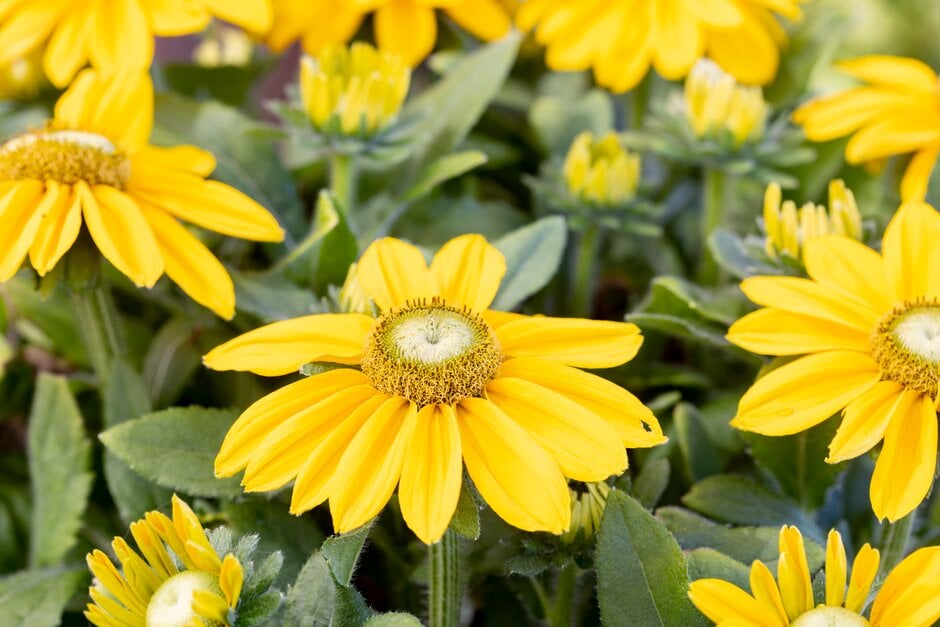Rudbeckia Sunbeckia Ophelia ('Bullrudi 09'PBR) (Sunbeckia Series)

coneflower [Sunbeckia Ophelia]
A sturdy, upright deciduous perennial with dark green, velvety foliage and golden yellow, daisy-like flowers with a green central cone. Provides a long flowering period from summer through until the first frosts

Buy this plant
Size
Ultimate height
0.1–0.5 metresTime to ultimate height
1–2 yearsUltimate spread
0.1–0.5 metresGrowing conditions
Moisture
Moist but well–drained, Well–drainedpH
Acid, Alkaline, NeutralColour & scent
| Stem | Flower | Foliage | Fruit | |
| Spring | ||||
|---|---|---|---|---|
| Summer | Gold Yellow Green | Green | ||
| Autumn | Gold Yellow Green | Green | ||
| Winter |
Position
- Full sun
- Partial shade
Aspect
South–facing or West–facing
Exposure
Exposed or Sheltered Hardiness
H3Botanical details
- Family
- Asteraceae
- Native to GB / Ireland
- No
- Foliage
- Deciduous
- Habit
- Bushy, Columnar upright
- Genus
Rudbeckia may be annuals, biennials or rhizomatous herbaceous perennials, with simple or pinnately divided leaves and large daisy-like flower-heads with yellow or orange rays surrounding a prominent conical disk
- Name status
Trade
How to grow
Cultivation
Best grown as a half-hardy annual. Grows well in moderately fertile, preferably heavy but well-drained soil in full sun or partial shade. See rudbeckia cultivation for further advice
Propagation
Propagate by seed sown with gentle heat in spring
Suggested planting locations and garden types
- City and courtyard gardens
- Cottage and informal garden
- Patio and container plants
- Coastal
- Wildlife gardens
- Cut flowers
- Flower borders and beds
- Bedding
- Conservatory and greenhouse
Pruning
Deadhead spent flowers
Pests
Generally pest-free
Diseases
May be susceptible to grey moulds if air circulation is poor
Get involved
The Royal Horticultural Society is the UK’s leading gardening charity. We aim to enrich everyone’s life through plants, and make the UK a greener and more beautiful place.